
Do you ever have the urge to reach across the kitchen counter and pluck a few fresh leaves of basil for your pasta, like in one of those cooking shows? Or to cut off a sprig of green rosemary with a flick of your knife to season your roast?
If you love to cook, there are several reasons why you’ll want to grow herbs all year round inside your home.
First of all, fresh is best.
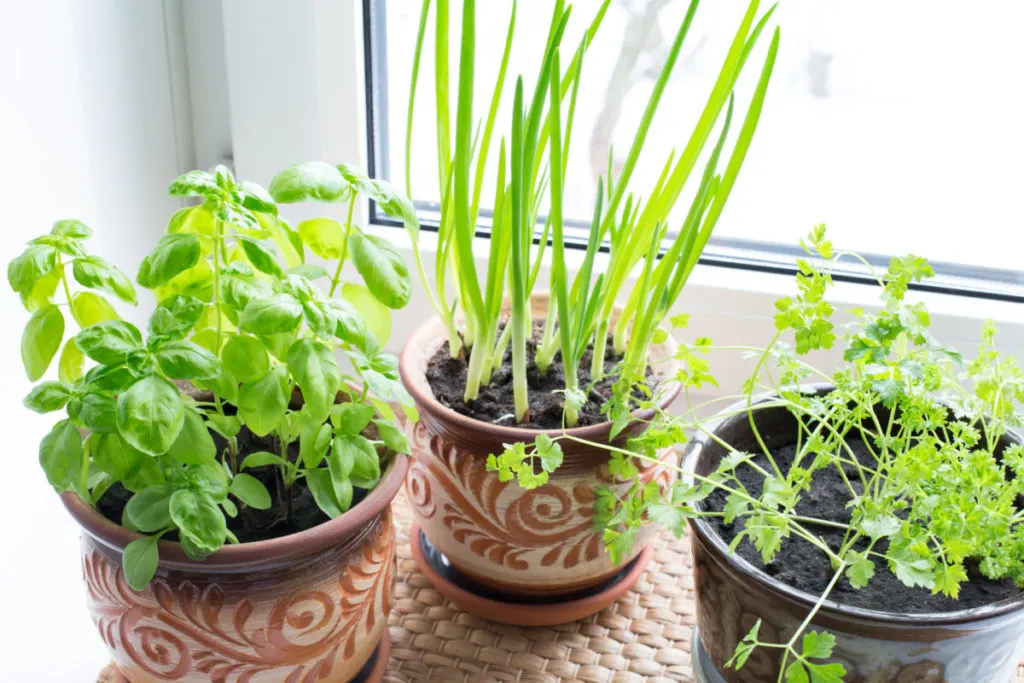
Certain herbs, but not all, lose their distinct flavor when dried. Flavorful examples of this are chives, basil, parsley and tarragon.
In my experience, an abundance of garden chives is not worth the effort of drying. They discolor to an undesirable yellowish-green and the flavor magically vanishes. The nutrients may still be there, but it doesn’t add much beauty to your cooking.
Here are 12 tasty ways you can eat and preserve your chives instead, flowers included.
And, try making a pesto out of dried basil. It’s possible, but is it worth it? That’s a question you need to ask yourself. Remember, fresh is best.
Secondly, fresh herbs are on the pricier end of the shelf.
If you truly enjoy using fresh herbs in cooking, it pays to learn how to grow and care for them too.
Buying fresh herbs at the grocery store means you’ll be paying a premium. Plus, sometimes they have been sitting there so long under fluorescent lights, that maybe they aren’t even as fresh as you would like. If you’re going to have to invest a little TLC to get them growing again, know that it’s far easier to begin with a healthy plant.
Related reading? How to Keep Fresh Supermarket Herbs Alive Forever
And then there’s the act of growing herbs for the sake of self-reliance.
It’s easy enough to start your indoor herb garden from seeds, cuttings or purchase a growing plant to tend in the comfort of your own home.
As long as you have sufficient light coming in through the window, you’ll be able to grow a variety of herbs year-round. It’s incredibly rewarding to have your favorite herbs fresh at hand all throughout the months, for soups, stews, roasted veggies and, of course, the occasional cocktail.
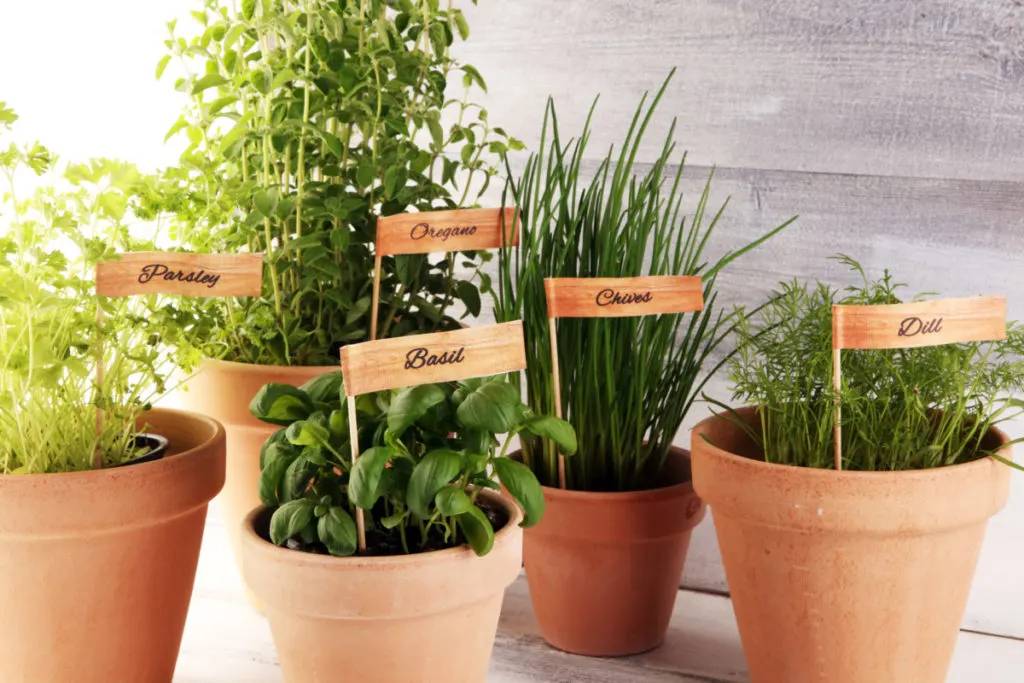
Besides light, you’ll also need to water your plants, provided it doesn’t rain inside your kitchen. As far as weeding goes, it will be light work.
Another thing to consider is the quality of potting soil, along with pots that have sufficient drainage.
All that said, let’s get growing!
Fresh Herbs To Grow Year Round
The first thing you need to remember about using herbs in cooking is that fresh herbs are best added at the end of cooking, or just as you “plate up”.
Dried herbs, do benefit from some cooking/simmering, as they become softer and more palatable this way.
Some herbs that maintain their flavor even when dried, are oregano, thyme, marjoram, bay leaf, rosemary and fennel seeds.
This information will help you decide what herbs you need fresh, and what others can be grown outside in the garden and dried for future use.
1. Basil
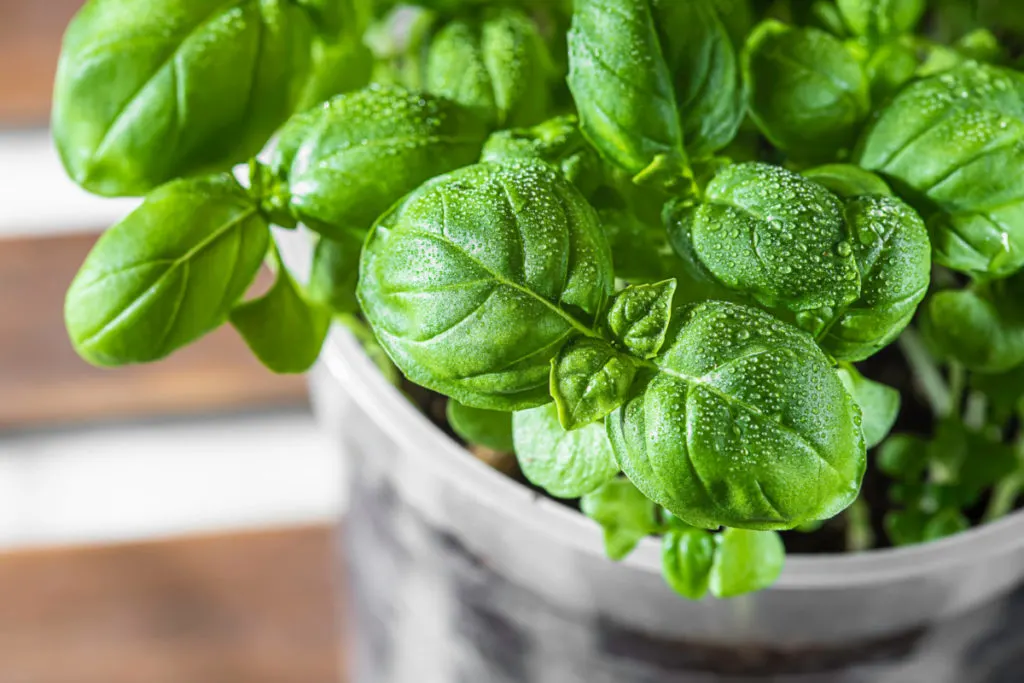
Basil is a wonderful plant that can grow prolifically under the right conditions. The trick to growing it indoors is that it needs the most amount of light it can get. To be more exact, anything above 6 hours is a bonus. If you don’t have quite enough light, there is still hope in the form of LED growing lights.
Besides light, your basil plant will benefit from regular pinching of leaves, creating more of a basil-bush look. This way it won’t remain long and leggy, at the same time, it will become more productive. Hence, more abundant. Perhaps even tastier.
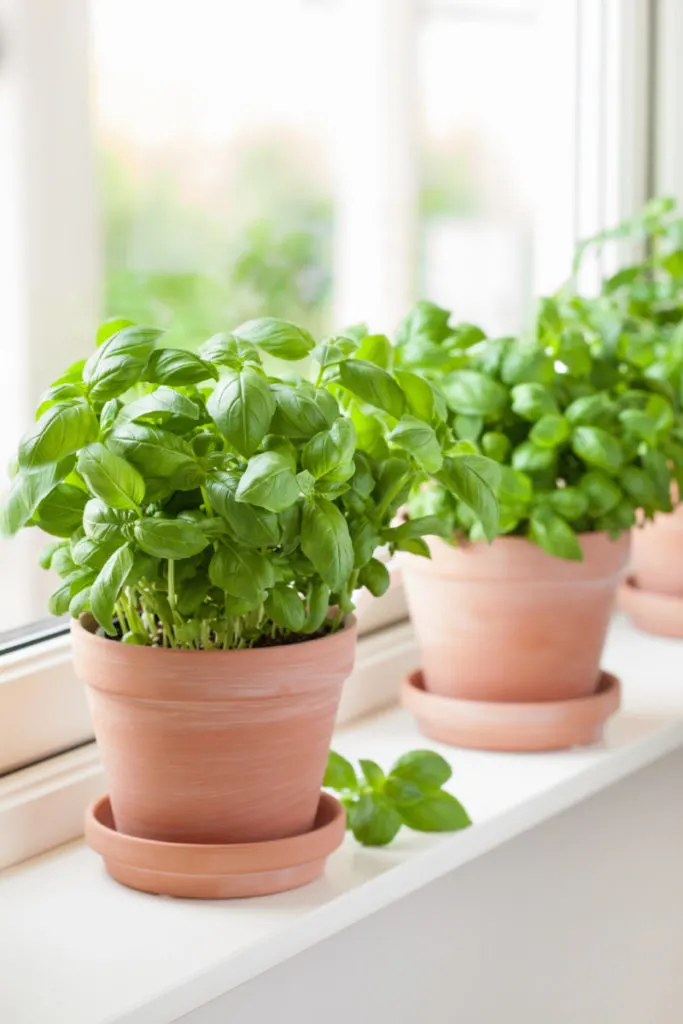
Water your basil plants when the top of the soil becomes dry to the touch. Most herbs are drought-tolerant, and won’t do well with overwatering. Unless you are growing watercress, which loves water as the name implies.
Fresh basil is excellent when added to pizzas, sauces, salads, soups, as a garnish on avocado toast or tossed in a green smoothie.
Related reading: How to Grow Enormous Basil Plants: From Seed, Cuttings Or Starter Plant
2. Chervil
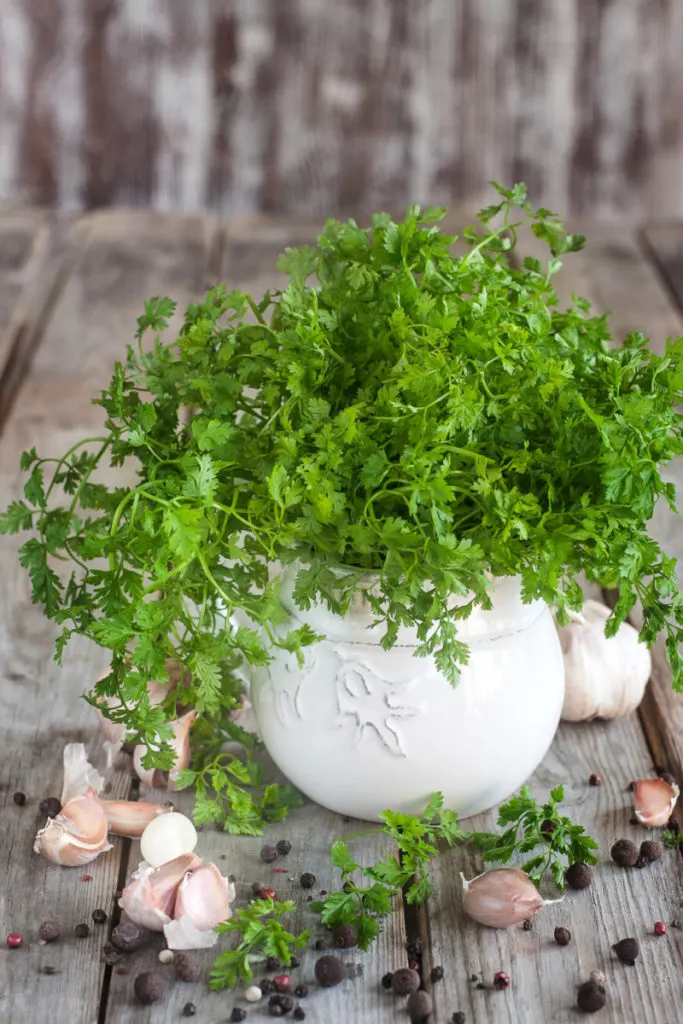
You might know chervil (Anthriscus cerefolium) as “French parsley”. What you may not know is that chervil is native to the Caucasus region, Southeastern Europe and Central Asia. It’s a hardy herb that can survive cold temperatures, at the same time it is delicate and refined.
With the knowledge that chervil has a tap root, you can easily see why it should be planted directly in a container, and not disturbed. Plants can grow up to 24″, yet there are ways to keep it tamed in the kitchen. Mainly by regular trimming of the top leaves. This will make your chervil bushier, at the same time it slows the tendency to bolt.
If you can establish a rhythm to pinching, eating and growing, you can have a wonderful relationship with this aromatic plant.
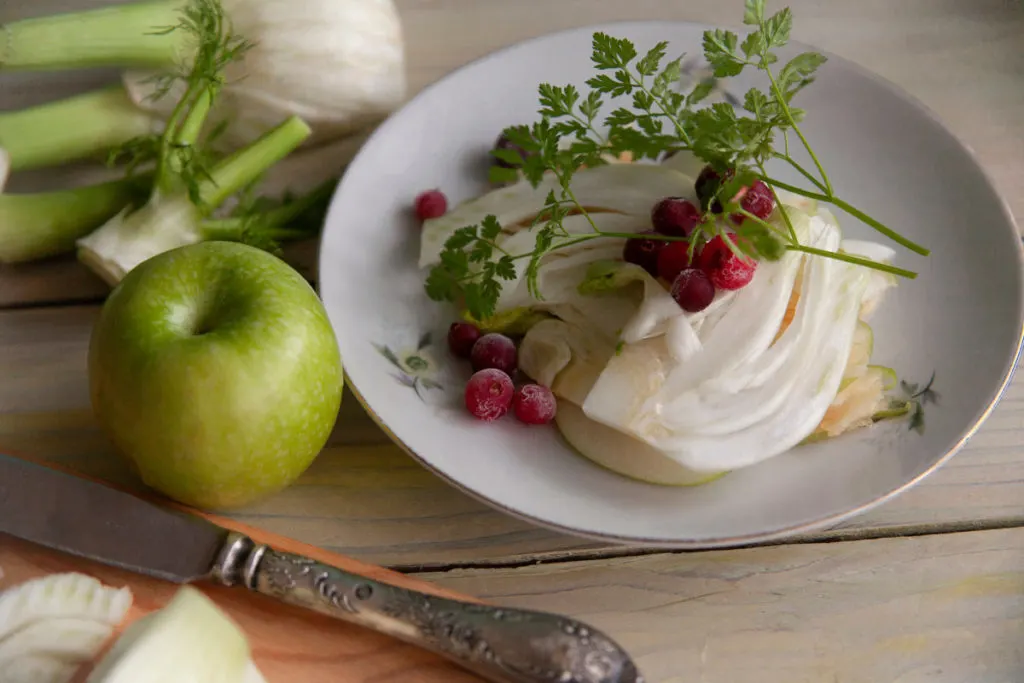
Chervil is often used to add more delicate flavor to fish dishes. It is also added to soups, salads, egg and meat dishes, as well as tucked into stuffings for poultry.
It is an underused herb that deserves to make a spirited comeback.
3. Chives
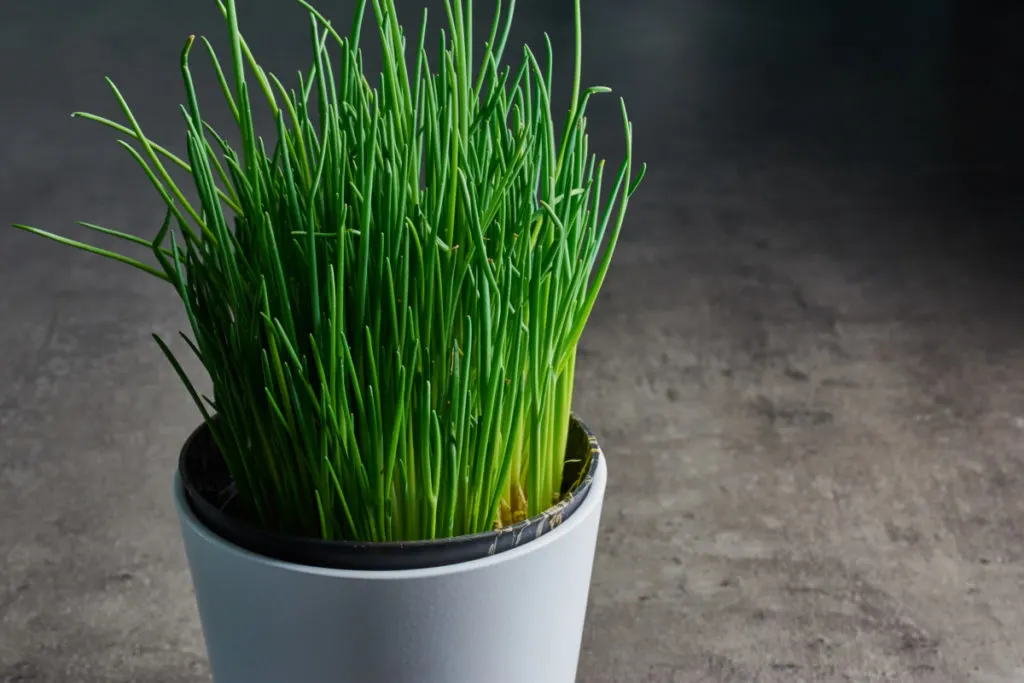
As previously mentioned, chives are best consumed when fresh.
When planted outside, they are extremely easy and effortless to grow. Each year in our no-dig garden, they seem to multiply on their own. Chives get extra bonus points for being a perennial.
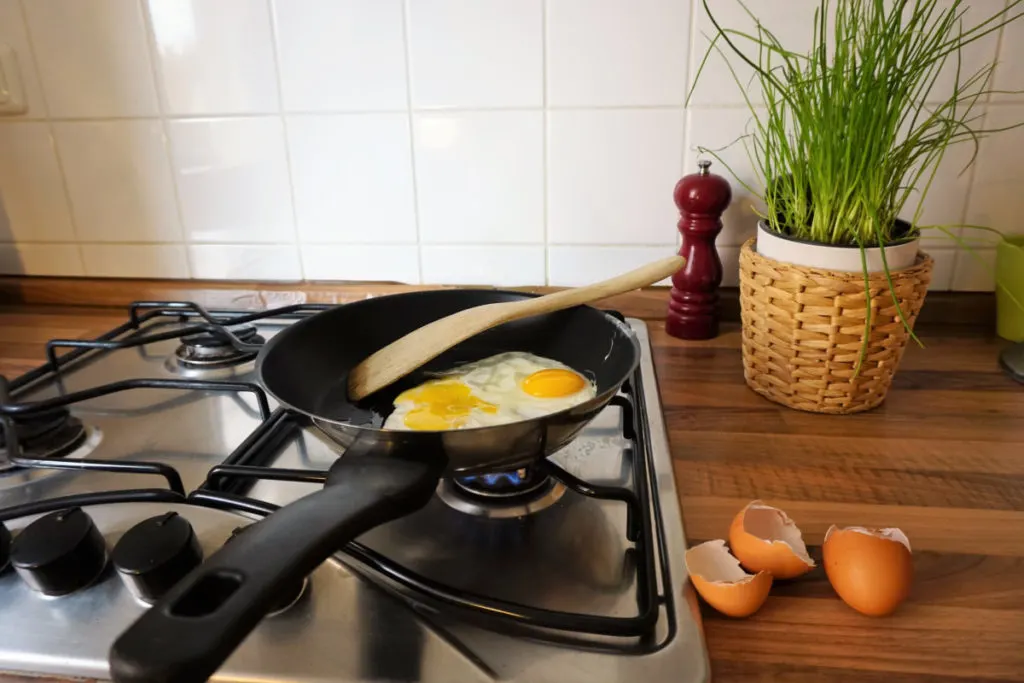
Chives are simple to start from seed, though if time is a concern, by all means, start your windowsill garden with an almost ready-to-harvest plant. If you have a friend or family member with an abundance of chives in the garden, ask to dig up a division of their clump (which is really just several individual chives growing right next to each other).
Choose a pot that is at least 8″ wide and deep, taking advantage of all the available soil and space.
When your chives get too big, simply divide them again.
If you have the space in your container garden for even more pots, consider growing chives in 3 or 4 of them. This way you can rotate your herb garden, eating fresh and giving the chance for the plants to regrow.
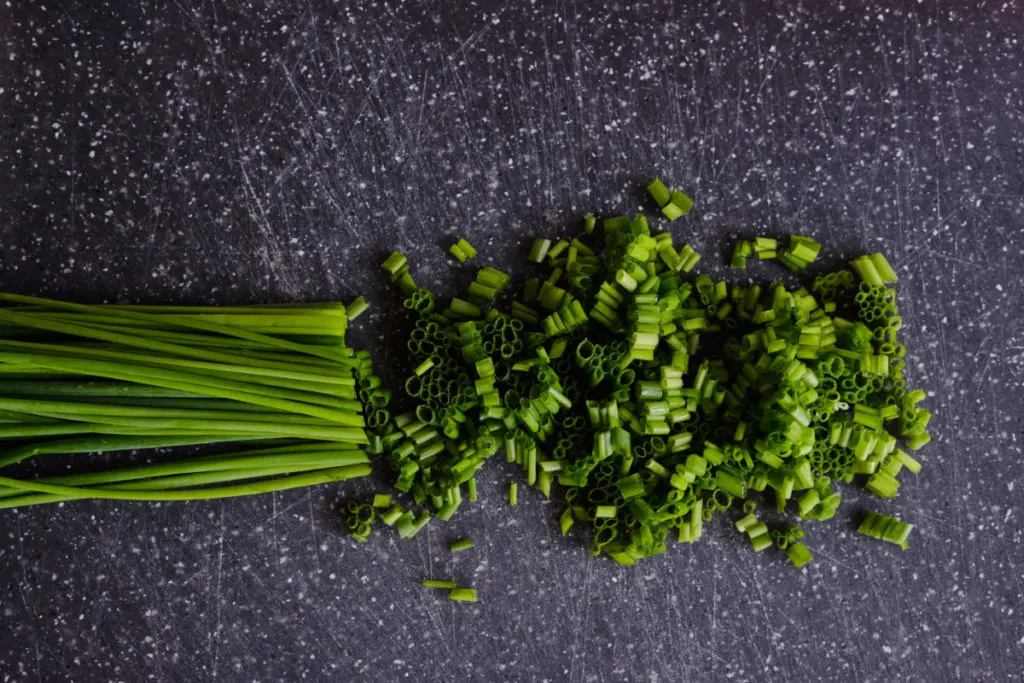
With a flavor that is reminiscent to onions, chives can be used in all manner of salads. They also taste excellent in egg dishes and sprinkled on baked potatoes with cheese.
Related reading: 10 Reasons To Grow Chives In Your Garden
4. Coriander/Cilantro
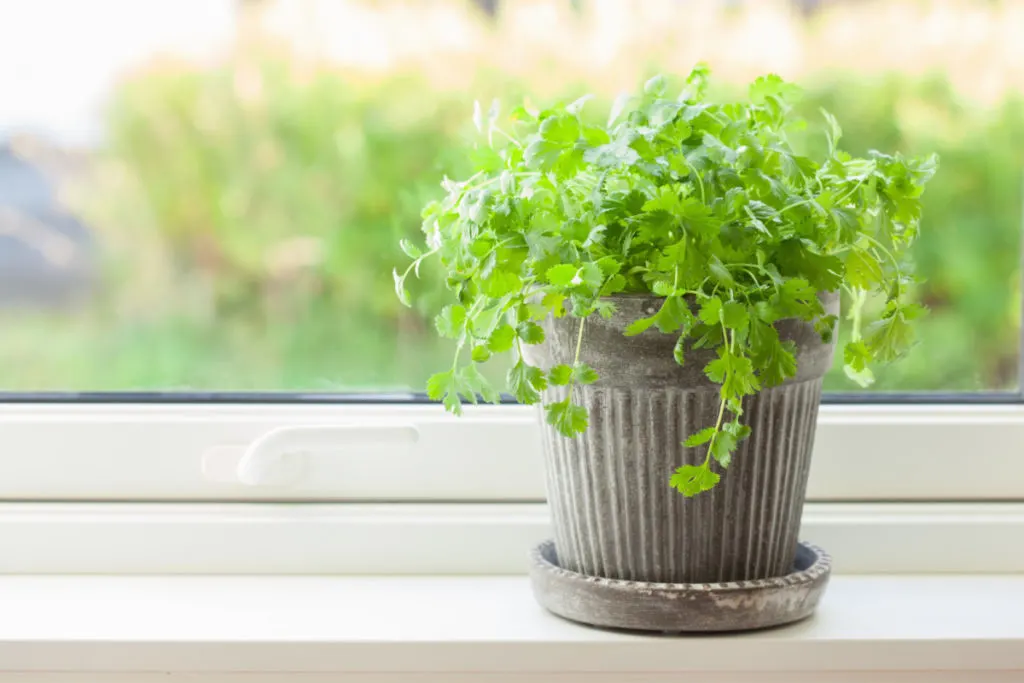
Cilantro (Coriandrum sativum), otherwise known as Chinese parsley, is an annual herb in the Apiaceae family. This includes relations such as angelica, anise, caraway, celery, chervil and several other aromatic garden herbs.
Coriander is a plant that you either like the flavor of, or you don’t. Some say it has a soapy flavor, to which science says the issue is genetic. I say, grow it if you’ll eat it. When in doubt, leave the propagation and consumption to someone else.
So, what is it? Coriander or cilantro?
They are one and the same, with different names for leaves and seeds. It is typically grown for its wonderfully tasty green leaves, it is these parts that we call cilantro. Otherwise, you can grow it for the seeds, which are coriander seeds.
It actually doesn’t mind growing inside in a mild environment, here are the steps you can take to grow a potful of it at home.
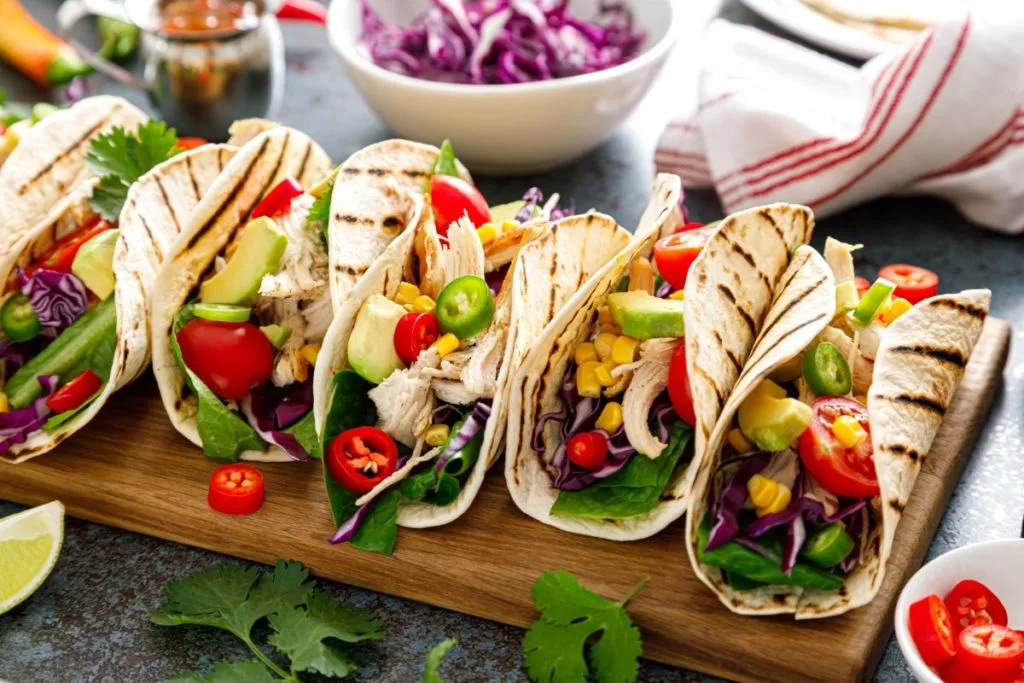
Cilantro greens and coriander seeds are an excellent addition to Indian, Thai, Mexican and Chinese dishes. You might also find that the coriander seeds are the perfect spice for your home canned pickles.
5. Lemon Balm
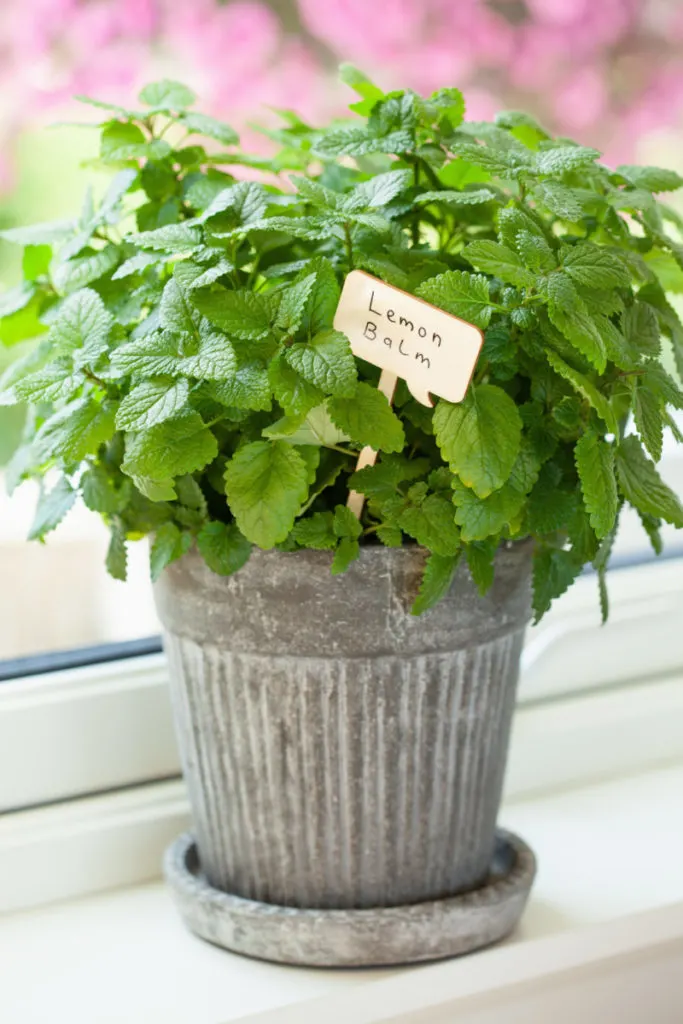
“Once dubbed the ‘elixir of life’, lemon balm (Melissa officinalis) is an ancient herb from the mint family that has been used as a medicine, and as a flavoring for food and drinks, for over 2,000 years,” says Lindsay in her total guide to growing and harvesting lemon balm.
If you’ve ever grown lemon balm in your garden, you know how luscious it can get, both in height and in width. It quickly propagates itself by both root and seed. Such a vigorous plant should be easy enough to grow in pots too, and it is.
One thing to watch out for is to choose a more compact variety that won’t block your entire window or the sunlight intended for other herbs.
Although it’s possible to start from seed, growing from starter plants, or divisions, is the faster route to a soothing mug of lemon balm tea.
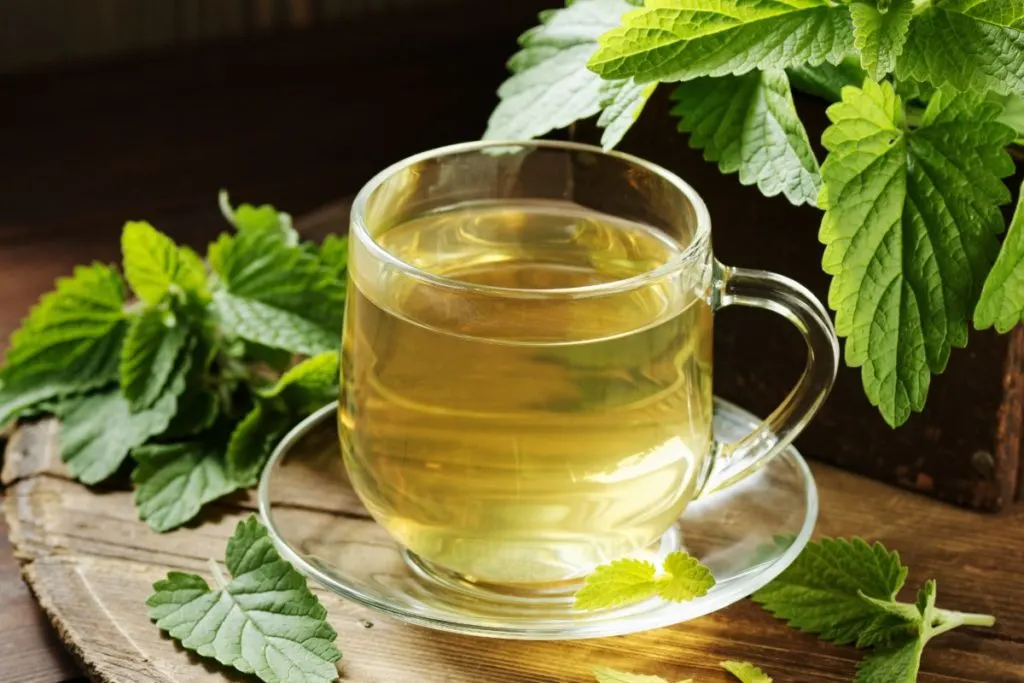
Lemon balm is wonderful in all manner of drinks from lemonades to shrubs. You can also add it to pesto, salsa, bug balm and soap. Not all in the same go, of course. Here are 20 uses for lemon balm, should your harvest be a grand one.
6. Oregano
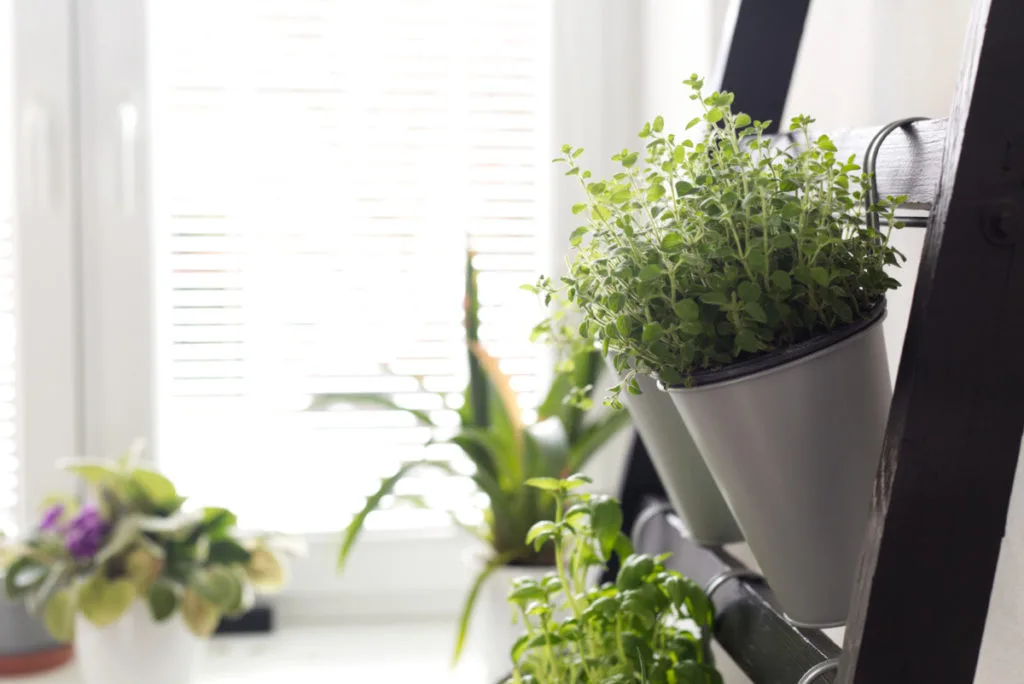
Oh, oregano, my favorite herb that I can’t seem to grow no matter how hard I try. Not everything prefers the fresh (cold) mountain air. So, I’ll relegate that task to another organic farm, where the sun shines more intensely. Every time it gets tossed into the pizza crust, I can give thanks for a diversity of climate.
Oregano is native to the hills of Mediterranean countries, as well as western Asia. So warmth is what it knows and likes. It’s also useful to know that it starts out as a low-growing and sprawling plant, then grows up in height to about 2′. Grown in pots, however, you get to pinch off just as much as you need for dinner, as often as you like.
How to grow oregano indoors: set your pots indoors in a south-facing window, don’t overwater your growing oregano plants, harvest regularly and all will be happy.
Related reading: 8 Brilliant Uses For Oregano + How To Grow & Dry It
7. Parsley
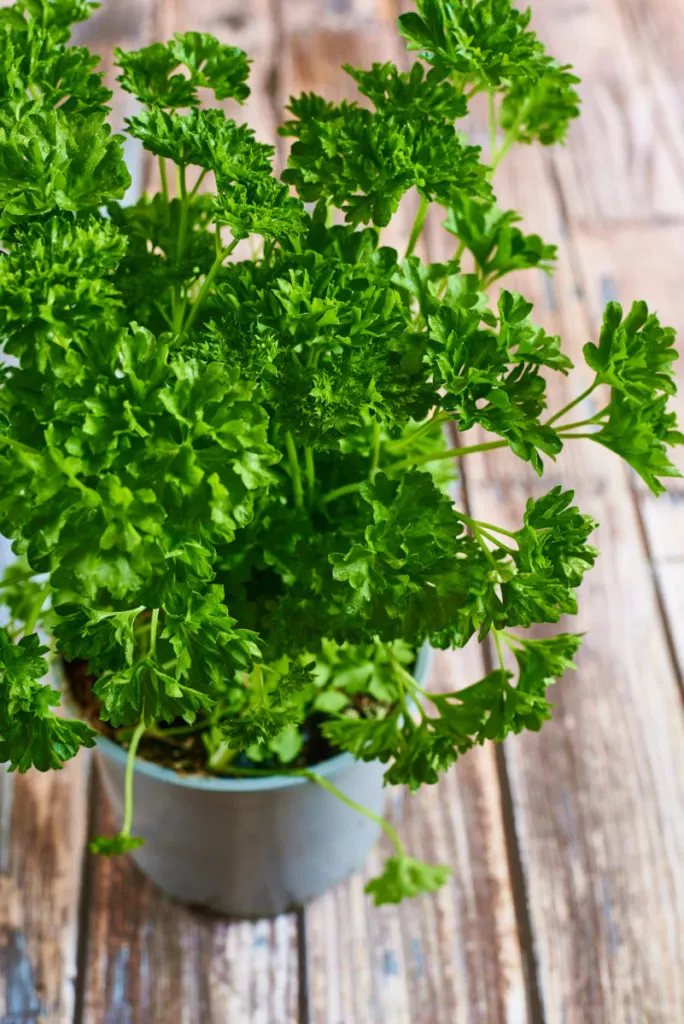
Parsley is easy enough to grow outdoors, yet we can also have the luxury of harvesting from our kitchen countertop, should we choose to put in the extra effort it takes to grow it indoors.
Again, a south-facing window is preferable for growing most varieties of herbs, including parsley. It should have about 6-8 hours of sunlight every day. If you don’t have those growing conditions, you can always supplement with grow lights, especially during the winter months.
Be sure to turn, or rotate, your pots every few days so they don’t spend too much of their energy leaning into their life source.
And again, to keep reiterating what indoor plants like: a nutritious potting soil in a pot with several drainage holes and some moisture in the air. Some of this moisture can actually come from cooking up beautiful meals in the kitchen.
With parsley, it is best to sow the seeds directly in the pot, as parsley is a taproot and doesn’t like to be disturbed. Plant more densely and thin the weakest ones out later.
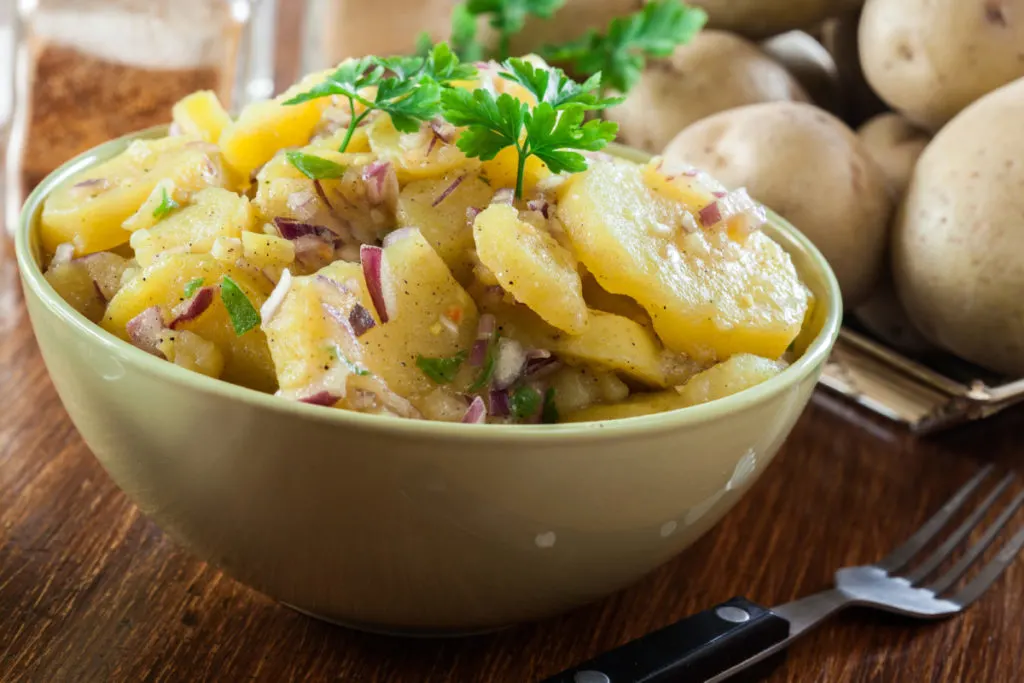
Parsley is fantastic when chopped up roughly and tossed on roasted potatoes or bean salad. Sprinkle it liberally on hotdogs, pasta, omelettes and more.
8. Rosemary
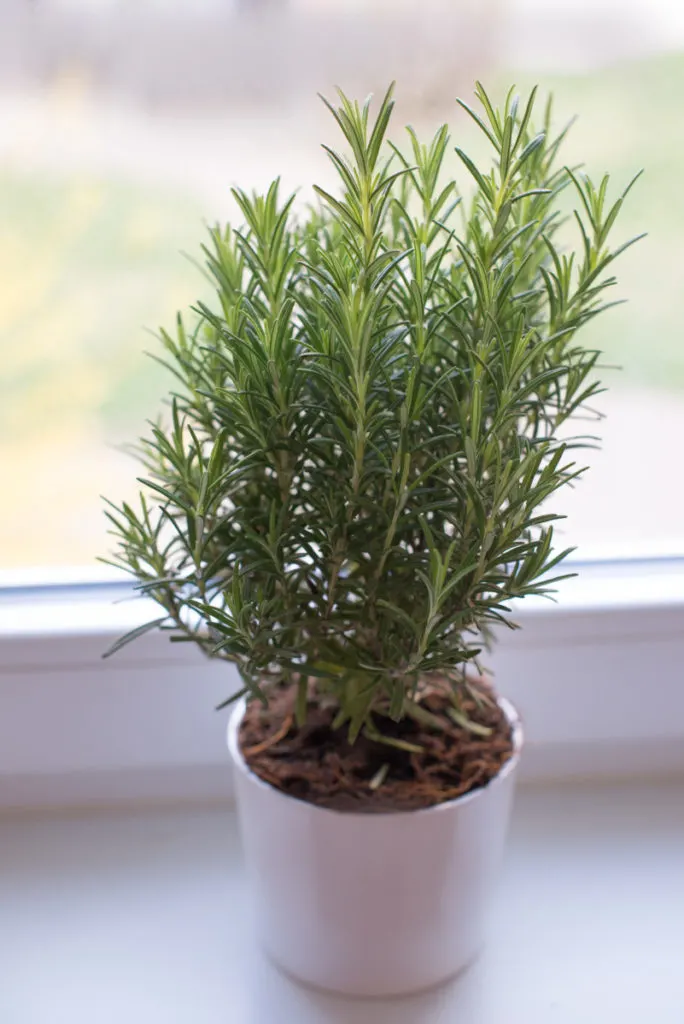
I’ve got to say, that rosemary tea is a true winter-warming treat. While dry stems are great for tea, fresh sprigs are even better for cooking. To reach across the counter for some fresh rosemary is a delight that you can only behold if there is a container available within arm’s reach.
As rosemary is a perennial, it makes perfect sense to purchase small plants and pot them up yourself, saving lots of time and frustration. From then on, all you need to know, is that rosemary doesn’t like wet feet, so overwatering is out of the question.
Your indoor rosemary plant will also need all the light it can get, so be sure to set it in the sunniest place.
Harvest as needed, and if your bush is getting too large, go ahead and dry some of the excess sprigs by tying them in small bundles.
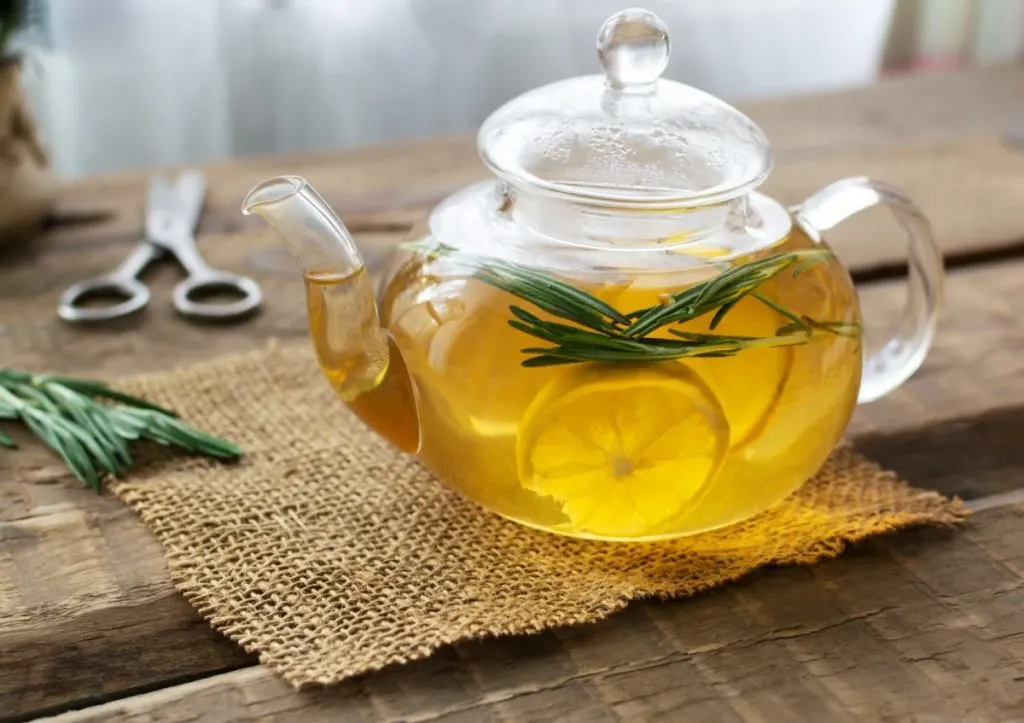
Rosemary pairs well with oven-baked potatoes and chicken thighs, it jumps delightfully into a rosemary cornmeal cake, and it can be sprinkled on top of a home-baked focaccia bread with olives.
Related reading: How To Grow Rosemary From Seed Or Cuttings – Everything You Need To Know
9. Sage
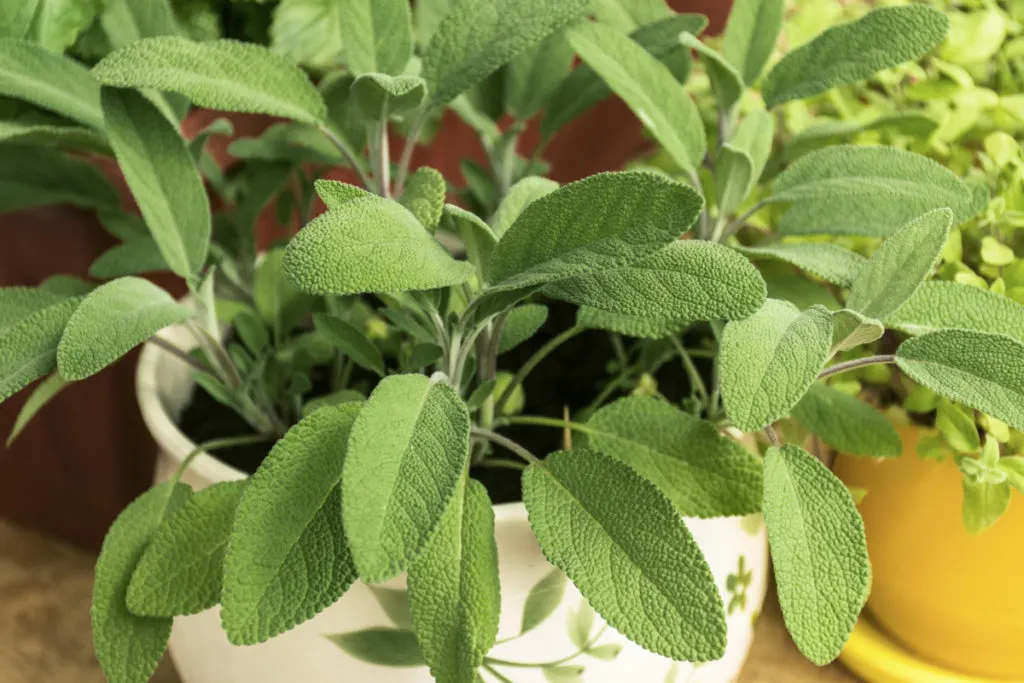
Growing sage in your windowsill will bring you sage advice, or rather the fresh herb, all year round.
In our household it is an essential herb, especially when winter is upon us.
As for growing indoors, what you need to know about sage, is that it is easily killed by overwatering, so be sure to have good drainage in your pots. Once your plants do become established, be sure to wait a year before your first indoor harvest. To expedite the harvest, start with larger plants and tend to them accordingly.

Sage is fantastic in roasts, homemade sausages, stuffing, with biscuits and gravy and more.
Related reading: 12 Reasons To Grow Sage In Your Garden
10. Tarragon
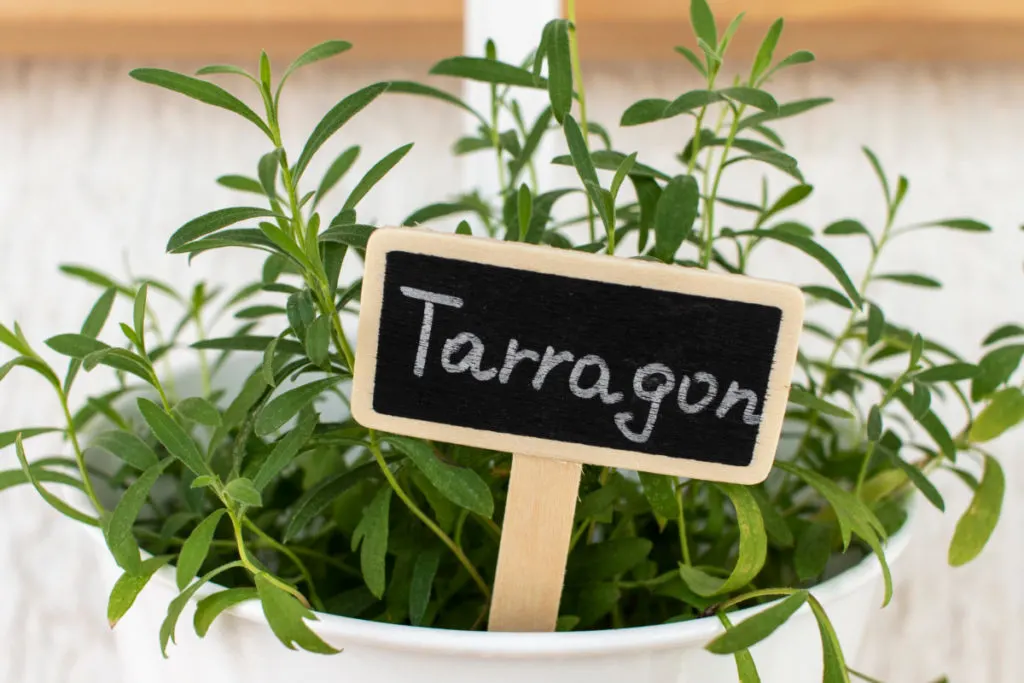
By now you know the drill.
6-8 hours of sunlight, not too much water in the soil, sufficient humidity in the air, not too cold air temperatures. In other words, warmth is like a blanket for your indoor plants.
Tarragon is another perennial that, when cared for correctly, can stay with you for years to come – even indoors. As opposed to other herbs that need a lot of sunlight, tarragon performs just as well in diffused light, so if you thought you might be missing out on growing herbs, think again.
If you don’t have a south-facing window, no problem.
In fact, it won’t need half as much light as the other herbs on this list. Though you still need to make sure that the pot is well-draining. An unglazed clay pot will allow excess moisture to evaporate, this is the best choice for all your indoor herbs.
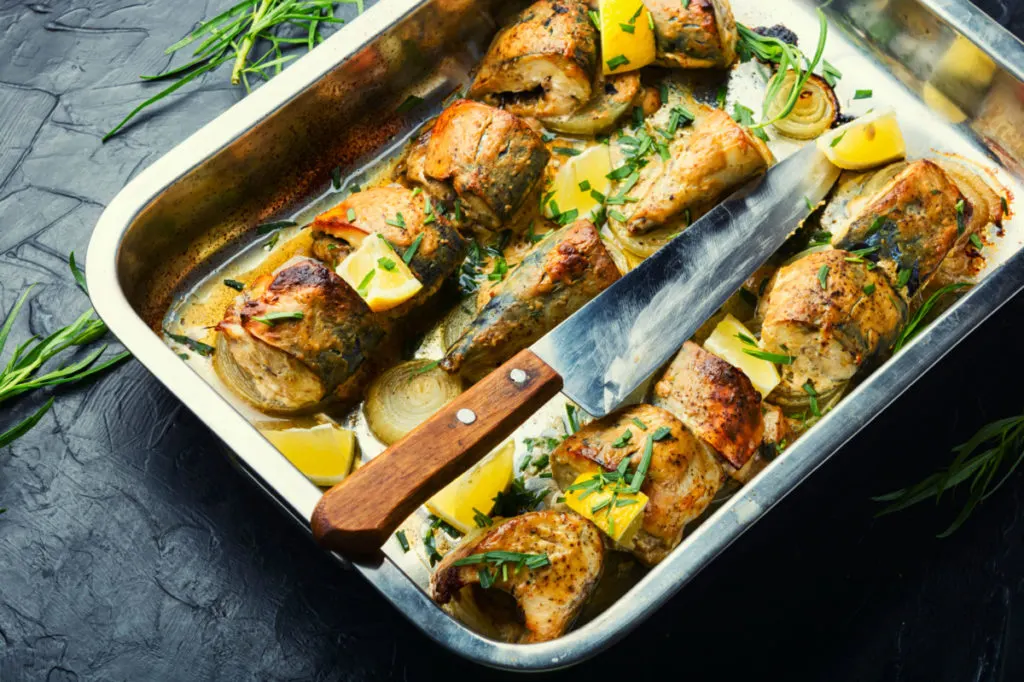
Flavor-wise, tarragon leaves are best when paired with fish, chicken and eggs. They can also be blended into buttery sauces, salad dressings and marinades.
11. Thyme
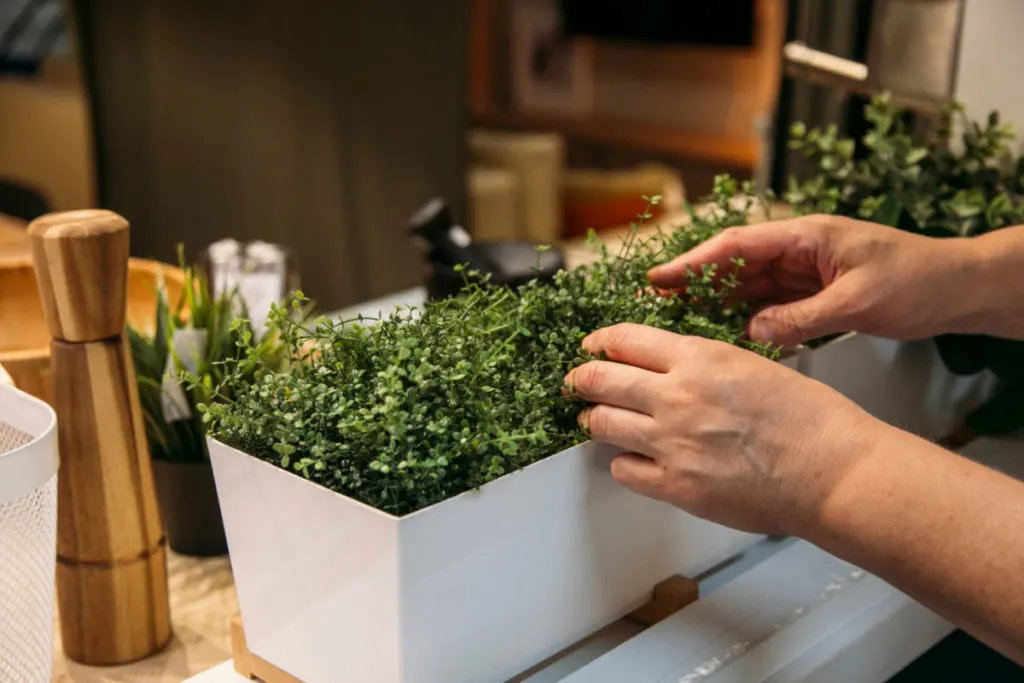
Lastly, as we near the end, thyme is running out. Okay, maybe half of you will get the joke, depending on how you pronounce the name of the herb.
Starting thyme is simple, from seed or cuttings. You can also start off more quickly with a plant ready for plucking. Though thyme also enjoys full sun, it can also be placed in an east- or west-facing window, making it one that will grow no matter what. You can also grow it in a pot with oregano and rosemary, as they have similar water requirements.
Some folks liken the flavor of thyme to an earthy and savory mixture of lemon and pine. If you’ve never tried it before, there’s a first time for everything.
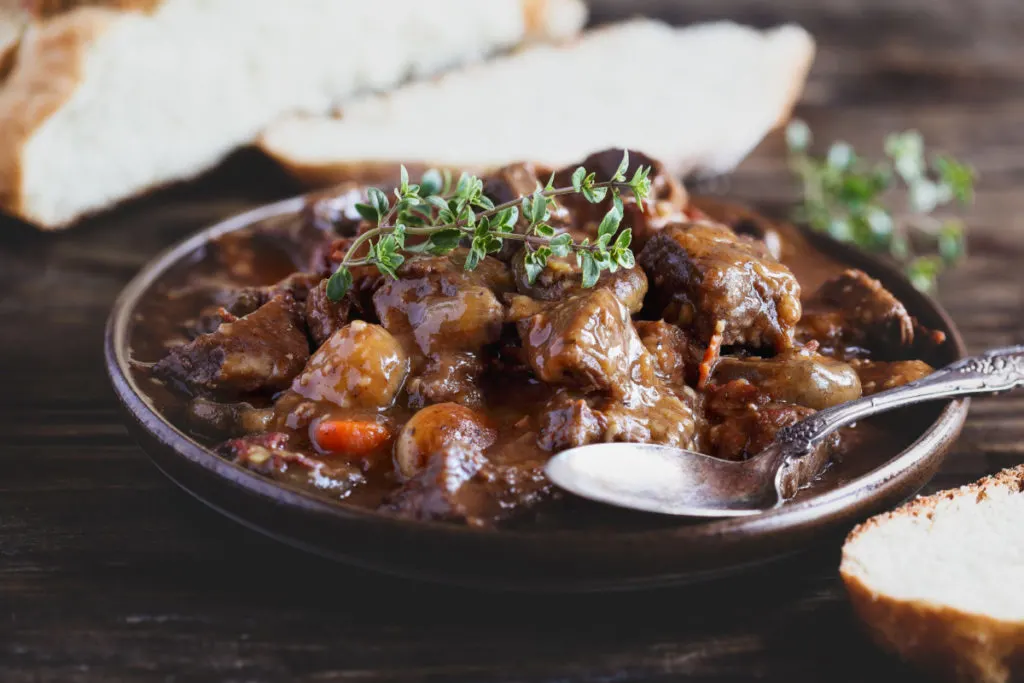
It’s perhaps best when tossed into soups and stews, where it can spend some time melding with meat and vegetables. You can also infuse thyme in honey or vinegar to create the most amazing sauces and dressings.
Don’t forget that you can grow more than one herb in a single pot.
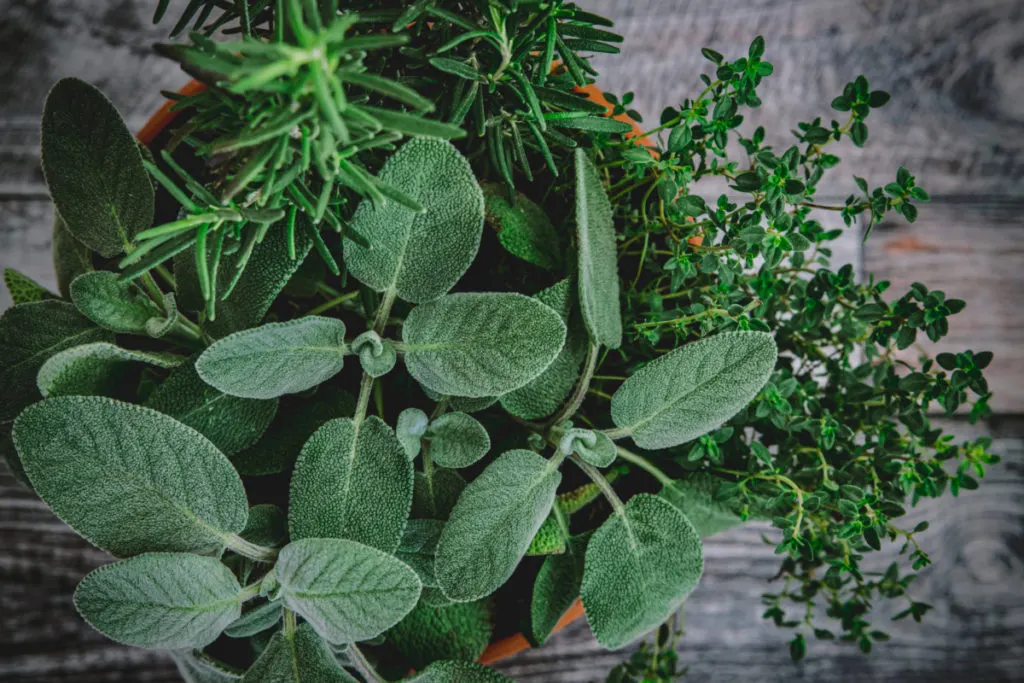
It doesn’t have to be one or the other. This is especially important to consider if you have a small space to grow food. You can, in fact, plant several herbs together in a longer, rectangle-shaped pot. For example, chives, thyme, mint, and basil all grow well together. You can do this even in hanging indoor baskets.
Herbs that are grown indoors will miss out on the benefit of pollinators, which is something to consider when summertime comes around.
If you have the chance to take your herbs outside for a sunbath and access to wind and rain, they will be happy for the chance – and the change of environment.

Get the famous Rural Sprout newsletter delivered to your inbox.
Including Sunday ramblings from our editor, Tracey, as well as “What’s Up Wednesday” our roundup of what’s in season and new article updates and alerts.

